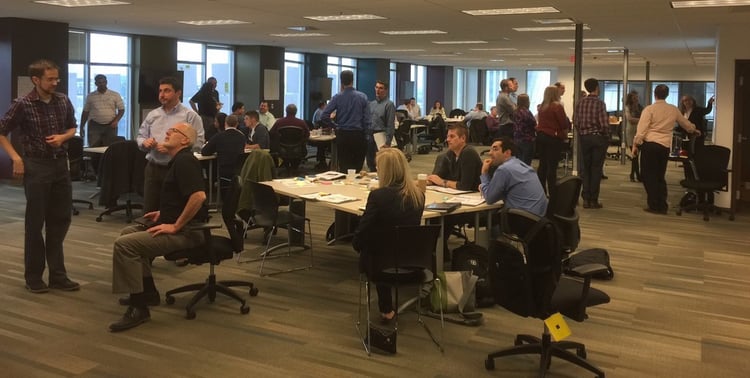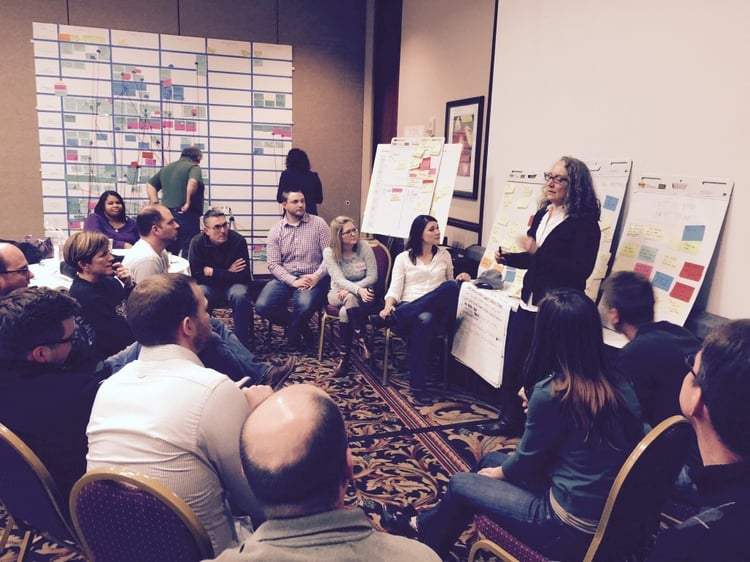Published on: Jun 28, 2019
Topics: Expressions, Leadership, News, Vision+Agility, Methods, Events
Editor’s Note: Original blog was published on Oct 16, 2015
How many people is too many?
To determine how extensive an Agile program can be, the fact to be noted is how many numbers of people should be involved in an Agile program. Dunbar’s Number governs this Number.

What is Dunbar’s number?
Dunbar’s Number is the limit of the Number of people in a group that can maintain stable social relationships. The term Social relationship is a reflection of regular interactions, the ability to recognize another member as part of the group or are committed to a common goal. These attributes are essential to any project and are perhaps more critical in Agile projects because they rely on team cohesion to minimize accuracy and control mechanisms.
The concept of Dunbar’s Number is based on research performed initially through the observations of primates and then extended to humans in the early 1990s. In 1992, Robin Dunbar published “Neocortex size as a constraint on group size in primates” in the Journal of human evolution.
Why Dunbar’s number is used in SAFe Agile Release Train and what are its benefits:
Dunbar noted a correlation between the size of a primate brain and the average social group brain size. While group size of 150 is often quoted as Dunbar’s Number, based on Dunbar’s Number the Scaled Agile Framework(SAFe) suggests that the most massive Agile Release Train(ART) should include approximately 150 people. The ART is supported by a Framework(SAFe) Release Train Engineer, Scrum masters, Product Management, and Product owners. A single team of 5-9 people is practicing agile.

Scaled Agile leverages many of the techniques used by team-level Agile, such as small team size, small batch size, and scrum. These techniques are very lean but are perceived by limit the amount of value that can be delivered within a specific period.
Agile Release Train primary work is to deliver value constraints inside an ART. It is a long-lived, self-organizing team of Agile teams, whatever set of Agile teams are necessary to implement some set of value stream 50-100 or 150 people need to collaborate intensely to build value that we are going to organize that teams in an Agile Fashion and bring them together in an Agile Release Train of self-organizing teams.
ART is a group of teams; it is a virtual organization of 5-12 teams(50-125 individuals) that plans commits and executes together. They do all those things based on program increment or value in a timebox used for conducting a transaction to Evaluate, Inspect, and Adapt. The default program Increment is for ten weeks, shorter is eight weeks, and longer is for 12 weeks.
"Ambient intimacy is about being able to keep in touch with people with a level of regularity and intimacy that you wouldn't usually have access to, because time and space conspire to make it impossible."
To know more about Ambient intimacy, please go to this link below:
We are going to synchronize the iteration and the program increments when multiple trains work together, and the team's Iterations are synchronized primarily to make it fission and make it practical so that the iteration we need to make sure that we all get the working software every two weeks. There is a single program Backlog operates under architectural, and UX guidance frequently produces valuable and evaluates system-level solutions.
As Agile projects grow in size, additional techniques are needed to maintain and control. Dunbar's number provides a limit to try to avoid letting a piece of work become too large to manage. The number act as a limit to the number of people involved in a part of work. Applying additional constraints, such as Releases or SAFe program increment, add a dimension of time as a constraint. The combination of constraints on the number of people and how long those people will be working provides an explicit obstacle to how much work can be delivered.